Discover 11 hidden attractions, cool sights, and unusual things to do in Leominster (United States). Don't miss out on these must-see attractions: Doyle Reservation, Pine Grove Cemetery, and Monument Square Historic District. Also, be sure to include Jewett Piano Company Building in your itinerary.
Below, you can find the list of the most amazing places you should visit in Leominster (Massachusetts).
Table of Contents
Doyle Reservation
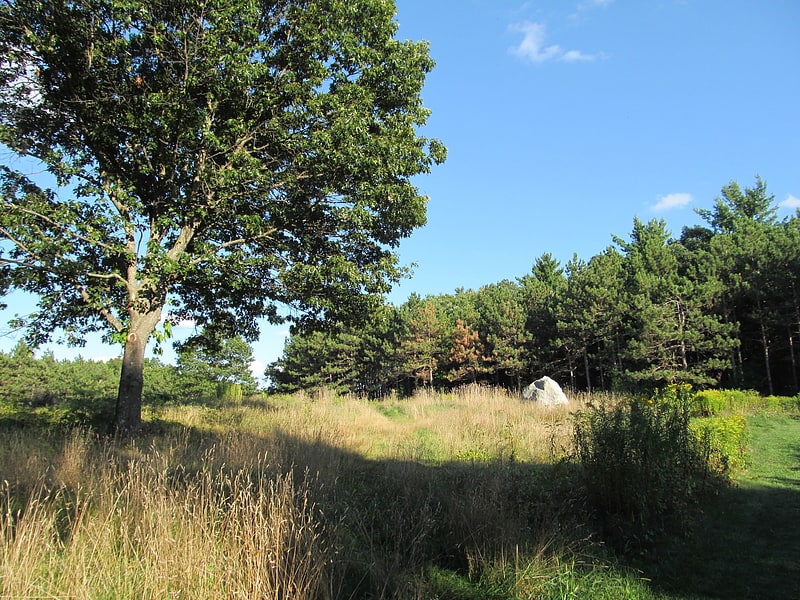
The Doyle Community Park & Center, located in the city of Leominster, Massachusetts, is a 170-acre landscaped urban park and open space reservation managed by The Trustees of Reservations, a non-profit conservation organization. It is also the location of the Doyle Center: a conservation education center, regional office, and green building initiative. The property consists of three main areas: Pierce Meadow, a landscaped urban park and former estate of Harry W. Pierce; the Doyle Center grounds, buildings, and adjoining woodlots; and a hay field and adjoining wetland.
The Doyle Community Park was acquired as a gift of Louise I. Doyle in 1981. Additional lands were acquired in six purchases from 1991 to 2001. Reservation parking lots are located on Lindell Avenue. The property is open to walking, cross country skiing, picnicking, nature study, and dog walking. There are 3.5 miles of walking trails throughout the reservation.[1]
Address: 464 Abbott Ave, 01453-5446 Leominster
Pine Grove Cemetery
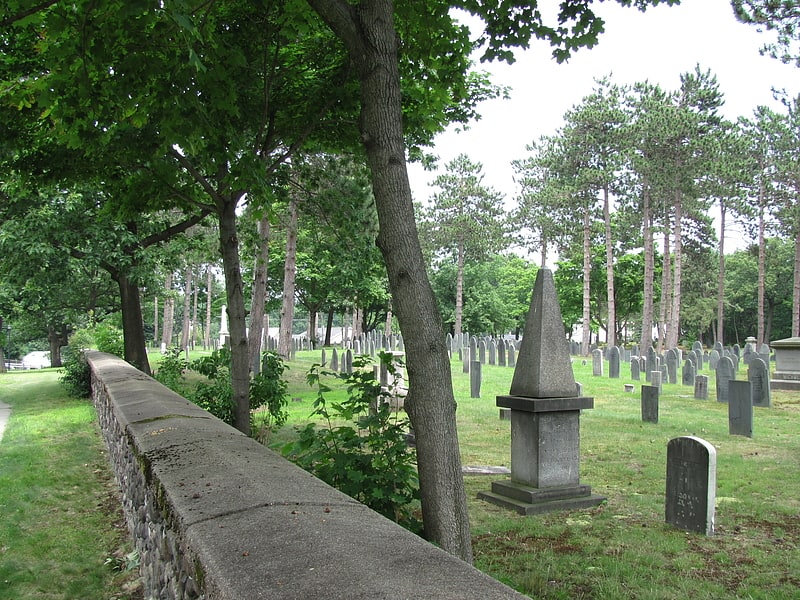
Cemetery in Leominster, Massachusetts. The Pine Grove Cemetery, also known as the First Meetinghouse Burying Ground, is an historic cemetery on Tremaine and Main Streets in Leominster, Massachusetts. Established in 1742, it is the city's oldest cemetery, and the principal surviving element of the town's early settlement. It was originally located adjacent to the community's first meeting house, built in 1741 and dismantled in 1774. The cemetery, closed to burials since 1937, was listed on the National Register of Historic Places on March 12, 2008.[2]
Monument Square Historic District
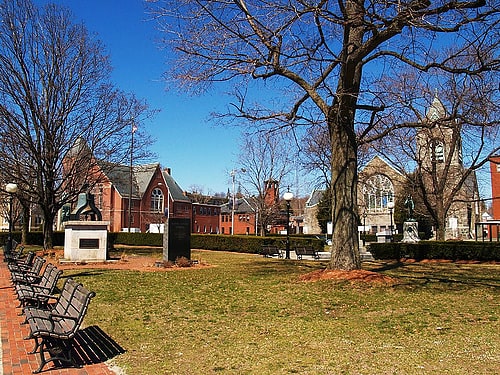
The Monument Square Historic District is a historic district on Main and Water Streets, and Grove Avenue in Leominster, Massachusetts. The district includes Leominster's traditional town common or square, which is known as "Leominster Square" or "the Common."
Leominster's common is the site of several monuments, including: a monument marking the site of the town's second meeting house from 1775-1824 (which was replaced by the first town house), a Native American mortar (moved to the site in 1880), several veterans' memorials, and a firefighters' memorial. The Leominster Historical Society headquarters is adjacent to the square.
In 1743 the common was chosen as the site of the "First Church" meeting house in Leominster. At that time, an active church congregation was required for a town to gain a charter from the Massachusetts government. Originally a Congregationalist (Puritan) congregation, First Church's members later adopted a Unitarian theology in the early 19th century, causing the traditional Reformed (Calvinist) members to leave the building and found what is now Pilgrim Congregational Church, also located on the common. The First Church congregation was funded with state tax revenue until 1835, when Massachusetts separated its churches from state funding.
The historic district also contains many 19th-century buildings, and the area was added to the National Register of Historic Places in 1982. The city hall and various churches and businesses are adjacent to the square.[3]
Address: 17 School Street, Leominster
Jewett Piano Company Building

The Jewett Piano Company Building is an historic building at 140 Adams Street in Leominster, Massachusetts. Built in 1892, it is a well-preserved example of late 19th-century wood-frame industrial construction. It is one of two surviving 19th-century piano case company plants in the city, which was known for this industry until World War I. The building was listed on the National Register of Historic Places in 2019. The building has been converted to residential use, known as Ivory Key Apartments.[4]
Cluett Peabody & Company
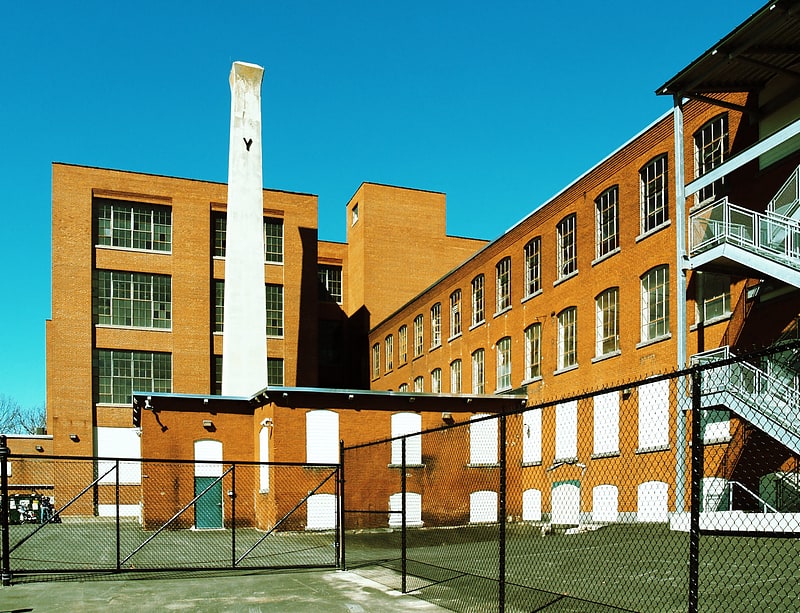
Cluett Peabody & Company, Inc. once headquartered in Troy, New York, was a longtime manufacturer of shirts, detachable shirt cuffs and collars, and related apparel. It is best known for its Arrow brand collars and shirts and the related Arrow Collar Man advertisements. It dates, with a different name, from the mid-19th century and was absorbed by Westpoint Pepperell in the 1980s. The Arrow name is still licensed to brand men's shirts and ties.
The company manufactured shirts and collars in a historic building at 123 First Street in Leominster, Massachusetts.
The building was constructed in 1902 and added to the National Register of Historic Places in 1989.[5]
Frances H. and Jonathan Drake House
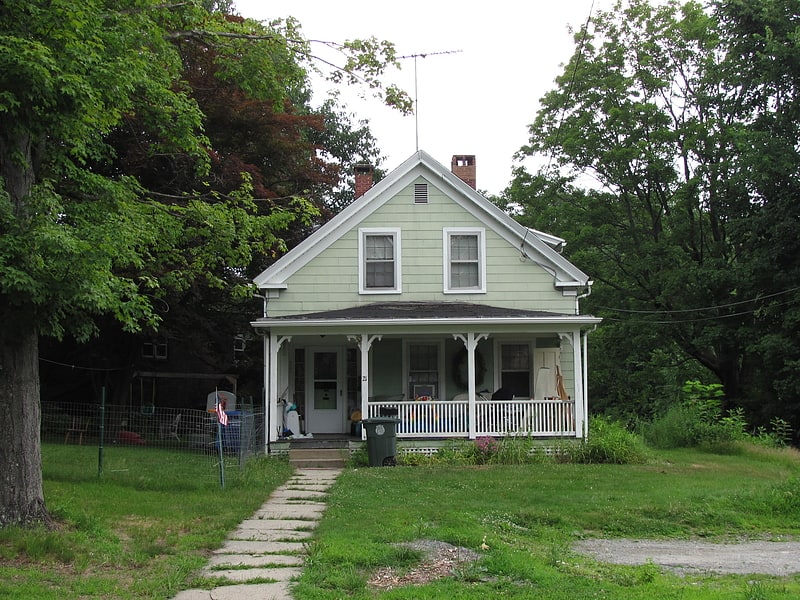
Historical landmark in Leominster, Massachusetts. The Frances H. and Jonathan Drake House is an historic house at 21 Franklin Street in Leominster, Massachusetts, United States. Built in 1848, this typical Greek Revival worker's cottage is notable as a stop on the Underground Railroad during the pre-Civil War years. Frances and Jonathan Drake are documented as having hosted Shadrach Minkins after he was successfully extracted from custody at a Boston court hearing. The house was listed on the National Register of Historic Places in 2008.[6]
Wachusett Shirt Company
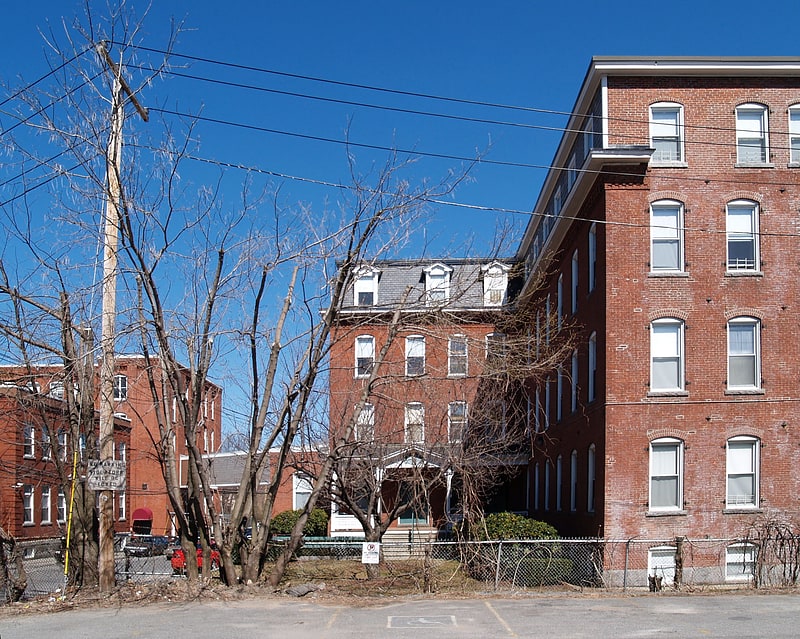
Building in Leominster, Massachusetts. The Wachusett Shirt Company is an historic industrial complex at 97-106 Water Street in Leominster, Massachusetts, United States. The five-building complex was developed between 1887 and 1910, and was home to one of the city's leading employers until the 1930s. Most of the complex converted into a residential complex known as Riverway Apartments in 1981. It was listed on the National Register of Historic Places in 1982.[7]
Whitney & Company
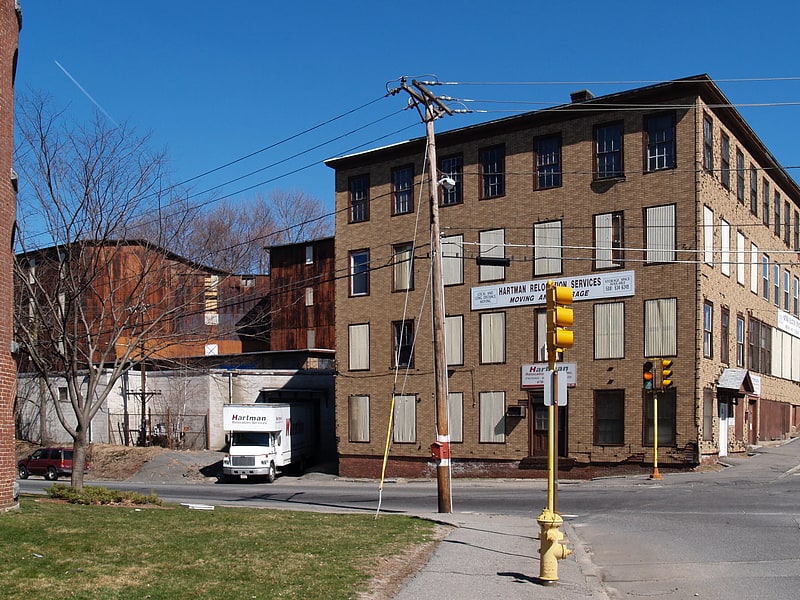
The Whitney & Company building is a historic industrial facility in Leominster, Massachusetts. The utilitarian brick four story building was built in 1893, and extended in 1923. It was built by Fred Abbot Whitney and Walther F. Whitney, whose business was the manufacture of boxes, notably paper boxes and satin-lined boxes, used for shipping other products to customers. The site was listed on the National Register of Historic Places in 1989. It has since been converted into residences called the Watermill Apartments.[8]
Wellington Piano Case Company Building
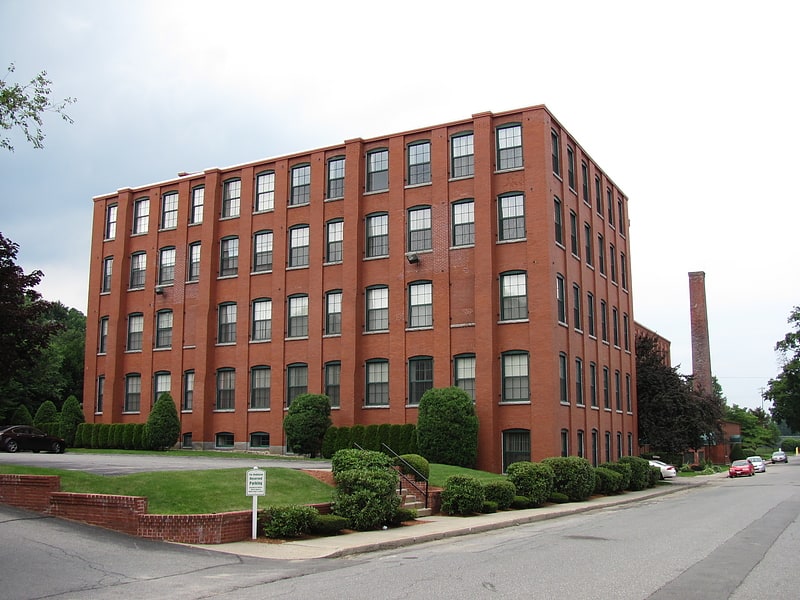
Building in Leominster, Massachusetts. The Wellington Piano Case Company Building is an historic building at 54 Green Street in Leominster, Massachusetts. The four-story brick building was built in 1895 by Frank E. Wellington, who manufactured piano cases for upright and grand pianos. The building was listed on the National Register of Historic Places in 1984. It was converted to condominium residences in 2002.[9]
F. A. Whitney Carriage Company Complex Historic District
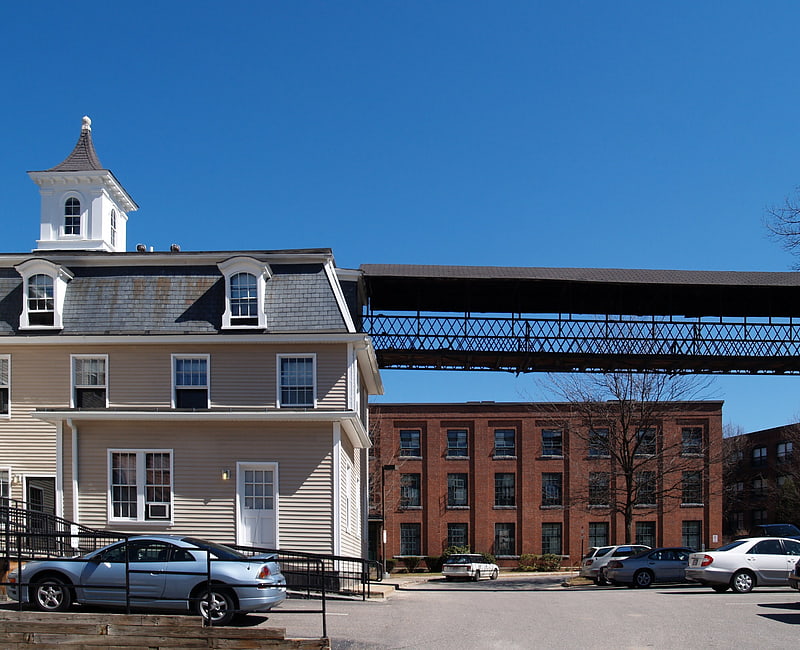
Historical place in Leominster, Massachusetts. The F. A. Whitney Carriage Company Complex Historic District encompasses a major 19th-century industrial complex off 124 Water Street in Leominster, Massachusetts. The complex is one of the best-preserved in the city, and was developed by of its most successful businesses of the late 19th and early 20th centuries. The F. A. Whitney Company, founded in 1858, manufactured baby carriages and related products, and operated here from 1862 to 1952, and was one of the city's major employers. The oldest surviving buildings of its manufacturing complex date to 1872. The district was listed on the National Register of Historic Places in 1988. Most of the complex has been converted into residential use.[10]
Massachusetts Gymnastics Center - Leominster
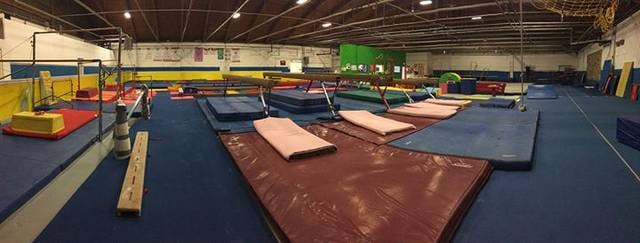
Address: 300 Hamilton St, Leominster